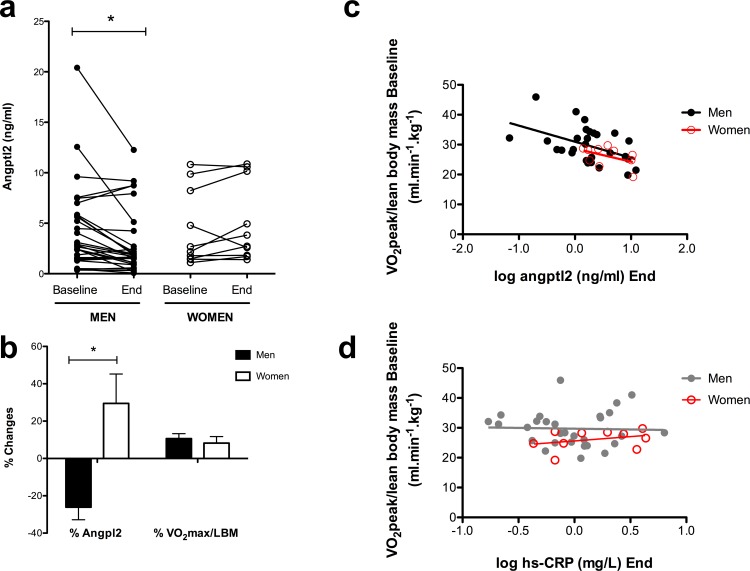Fig 1.
(a) Three-month aerobic exercise training lowered circulating angptl2 levels in post-acute coronary syndrome men (n = 30), but not in women (n = 10). Angptl2 levels were measured at baseline and at the end of the 3-month prevention program. Data are presented as paired individual values; *: P<0.05 versus baseline (Wicolxon signed rank test). (b) Percentage changes in angptl2 levels and in cardiopulmonary fitness (VO2peak/lean body mass, ml/min/kg) between baseline and the end of the training program. Negative values correspond to a reduction in angptl2 levels; positive values correspond to an increase in angptl2 levels or in VO2peak. Data are presented as mean±SEM of n values; *: P<0.05 versus values observed in men (Mann-Whitney test). (c) Negative correlation between angptl2 levels (log transformed) measured at the end of the 3-month training program and VO2peak measured at baseline (in men: r = -0.462, P = 0.0116, n = 29; in women: r = -0.461, P = 0.1797, n = 10). (d) No correlation between hs-CRP levels (log transformed) measured at the end of the 3-month training program and VO2peak measured at baseline (in men: r = -0.033, P = 0.865, n = 29; in women: r = 0.330, P = 0.352, n = 10).

